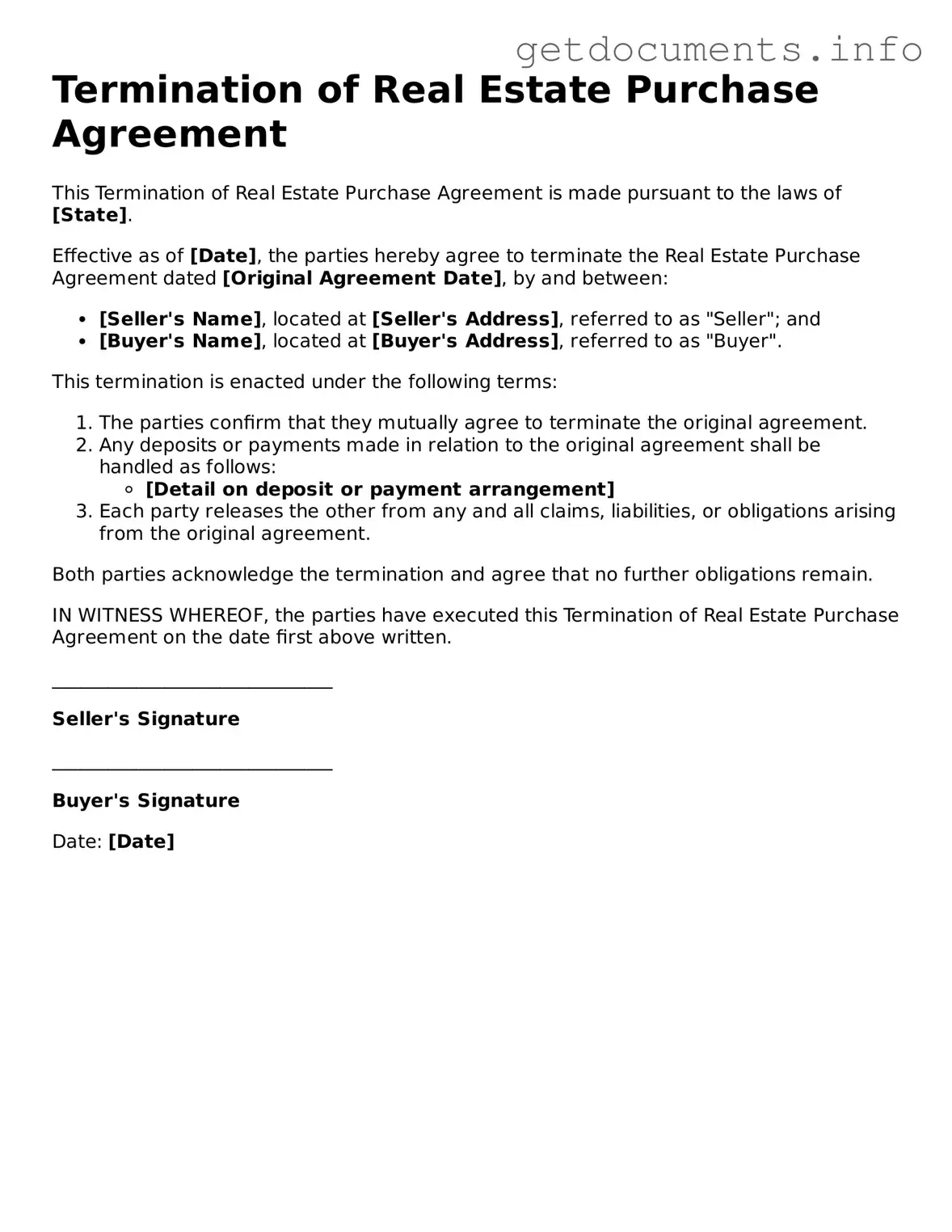Printable Termination of Real Estate Purchase Agreement Document
The Termination of Real Estate Purchase Agreement form is a legal document used to formally cancel a real estate purchase agreement between a buyer and a seller. This form outlines the reasons for termination and ensures that both parties acknowledge the cancellation of the transaction. Understanding how to properly fill out this form is essential for a smooth and clear termination process.
To get started, fill out the form by clicking the button below.
Access Termination of Real Estate Purchase Agreement Editor
